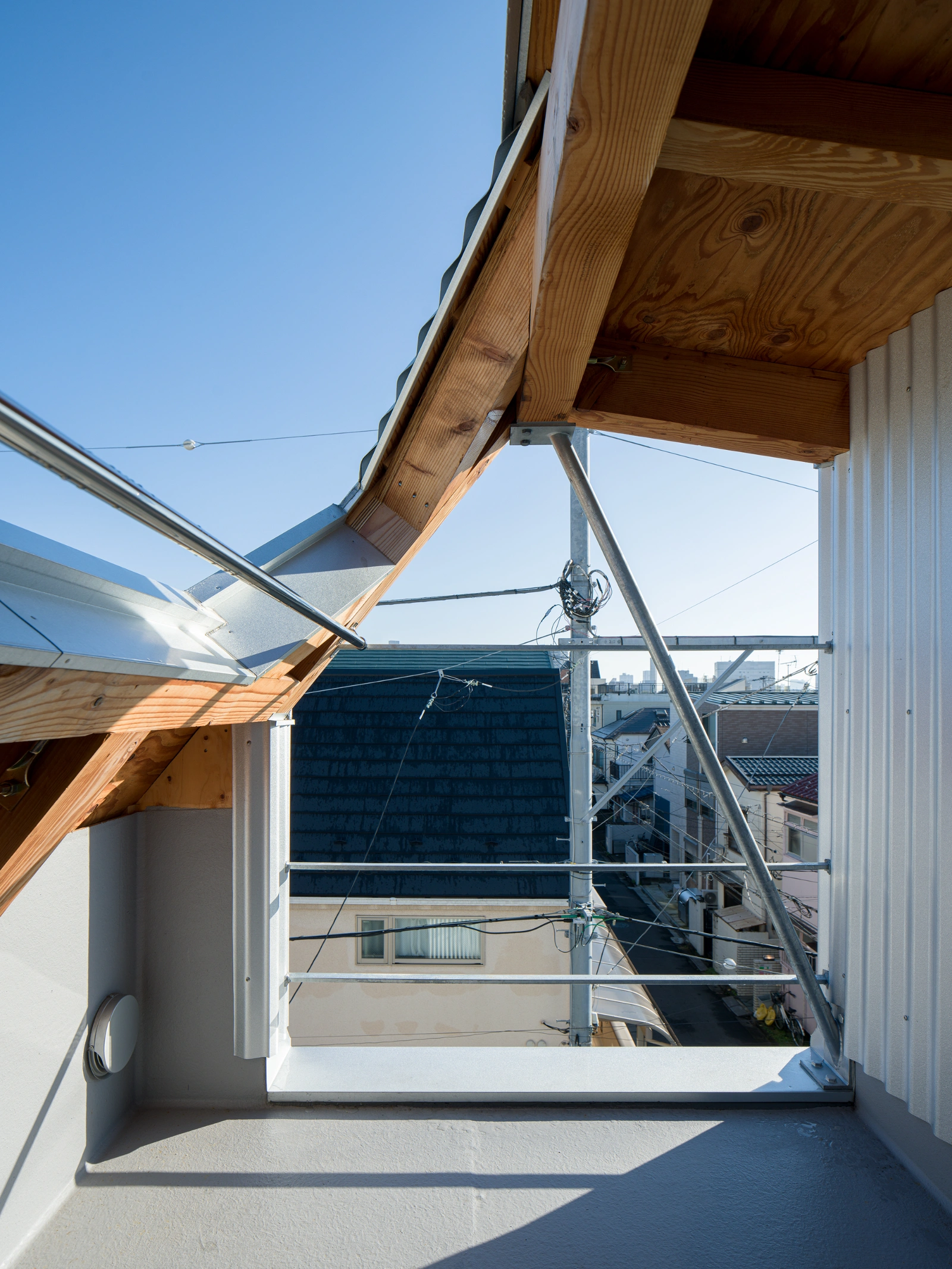'Small House on a Corner Lot' designed by KOMINORU Design in Tokyo offers a compelling rebuttal to the notion that space defines comfort.
On a mere 30 square meters, the architects orchestrate a symphony of verticality, regulation-savvy maneuvers, and spatial clarity, forging a home that reads as much as an architectural thesis as it does a living space. This three-story wooden structure doesn't shy away from its constraints; it metabolizes them, transforming fire codes and zoning limits into catalysts for design invention.
The project’s brilliance lies in its negotiation with Tokyo’s building regulations. Located on a corner lot in a semi-fire-resistant zone, the architects adopt a semi-fireproof typology introduced in the 2019 revisions of Japan’s Building Standards Act. This strategic pivot permits 80% site coverage, maximizing usable volume. By thickening beams and columns to 120mm, the design satisfies fire resistance while selectively revealing its timber anatomy—reclaiming a visual warmth often lost in code-heavy constructions. This material logic extends upward, with ceilings placed atop beams to stretch each floor’s vertical dimension, giving the interiors a rare sense of expansion within constraint.
Rather than succumb to the skewed geometries dictated by sky exposure rules, KOMINORU Design embraces them. The south-facing slope births a compact rooftop terrace, an improbable pocket of leisure amid the dense urban grain. Meanwhile, the northern slope—steeper and less forgiving—hosts a minimally designed bathroom, where even the bathtub is slotted between converging walls like a tailored insert. It's a choreography of necessity and intent, where spatial awkwardness becomes a functional asset.
But perhaps the project’s quietest triumph is its climate responsiveness. A ventilation window perched at the roof’s apex acts like a contemporary wind tower, pulling air through the vertical shaft of the house with elemental grace. The garden, untethered from the ground plane, rises to the second floor, allowing residents to meet foliage at eye level. In this, KOMINORU Design not only redefines domestic urbanism but gestures toward a new poetics of vertical living—rooted in the ground, but always reaching skyward.















